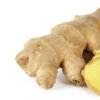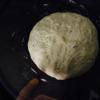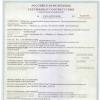Stoptussin: instructions for use and what it is for, price, reviews, analogues. Stoptussin drops - instructions for use Interaction with other drugs
tablets
Owner/Registrar
Teva Pharmaceutical Industries Ltd.
International Classification of Diseases (ICD-10)
J04 Acute laryngitis and tracheitis J06.9 Acute infection upper respiratory tract unspecified J20 Acute bronchitis R05 CoughPharmacological group
Antitussive and expectorant drug
pharmachologic effect
A combined drug that has a mucolytic (expectorant) and antitussive effect.
Butamirate dihydrocitrate has a peripheral local anesthetic effect on the sensitive nerve endings of the bronchial mucosa, which provides an antitussive effect.
Guaifenesin increases the secretion of bronchial glands and reduces the viscosity of mucus. The increase in secretion is due to both a direct effect on the bronchial glands - stimulation of secretion from the bronchial glands and removal of acid glycoproteins from acinar cells, and a reflex way, when the afferent parasympathetic fibers of the gastric mucosa are irritated and the respiratory center is depressed. Increased tone n. vagus stimulates the production of bronchial secretions. The mucus produced by the bronchial glands enhances the activity of the ciliated epithelium, thereby facilitating the evacuation of mucus from the bronchi and its expectoration.
Pharmacokinetics
Butamirate dihydrocitrate
When ingested, butamirate dihydrocitrate is rapidly and completely absorbed from the gastrointestinal tract. Plasma protein binding is 94%. It undergoes metabolism with the formation of 2 metabolites, which also have an antitussive effect. T1 / 2 - 6 hours Metabolites are excreted mainly (90%) by the kidneys and only a small part through the intestines.
Guaifenesin
Guaifenesin is rapidly absorbed from the gastrointestinal tract when taken orally. Plasma protein binding is negligible. Guaifenesin is rapidly metabolized to inactive metabolites that are excreted by the kidneys. T 1/2 - 1 hour
Dry irritating cough (including with infectious and inflammatory diseases of the upper and lower respiratory tract).
myasthenia;
Children's age up to 12 years;
I trimester of pregnancy;
lactation period (breastfeeding);
Hypersensitivity to the components of the drug.
1% - nausea, vomiting, diarrhea, decreased appetite, stomach pain.
From the nervous system: 1% - dizziness, headache, drowsiness.
Allergic reactions: 1% - urticaria and skin rash.
These effects usually resolve without dose reduction.
The frequency of the adverse reactions listed below was determined according to the following criteria: very often (≥ 1/10), often (> 1/100,< 1/10); иногда (> 1/1000, < 1/100); редко (> 1/10000, < 1/1000); очень редко (< 1/10 000), включая отдельные сообщения.
From the nervous system: often - headache.
From the organ of hearing and balance: often - dizziness.
From the side digestive system: often - nausea, anorexia, abdominal pain, vomiting, diarrhea; very rarely - a bitter taste in the mouth, heartburn, a feeling of heaviness in the epigastrium.
From the respiratory system: very rarely - shortness of breath.
From the side of the heart vascular system: rarely - chest pain; very rarely - tachycardia, palpitations.
From the side of the skin and subcutaneous fat: very rarely - itching, exanthema, urticaria.
Others: very rarely - hot flashes, pain around the eyes.
Overdose
Symptoms: signs of toxic effects of guaifenesin are drowsiness, nausea and vomiting.
Treatment: gastric lavage, activated charcoal, symptomatic therapy, there is no specific antidote for guaifenesin.
special instructions
Influence on the ability to drive vehicles and control mechanisms
The drug in high doses can have an adverse effect on activities that require increased attention, coordination of movements and quick decision-making (for example, driving a car, servicing machines and working at heights).
Use during pregnancy and lactation
Stoptussin should not be used in the first trimester of pregnancy. If it is necessary to use it in the II and III trimester of pregnancy, you should make sure that the intended benefit to the mother outweighs the potential risk to the fetus.
There are no reliable data on the penetration of butamirate and guaifenesin into breast milk. Need to stop breast-feeding for the period of application of the drug Stoptussin.
drug interaction
The action of guaifenesin is enhanced by lithium and magnesium preparations.
Guaifenesin enhances the analgesic effect of paracetamol and acetylsalicylic acid; enhances the effect of sedatives sleeping pills and general anesthetics on the central nervous system; the action of muscle relaxants, ethanol.
The drug is taken orally, after a meal. Tablets should be taken without chewing, with a liquid (water, tea, fruit juice).
Adults and children over 12 years old the drug is prescribed depending on the patient's body weight:
The interval between doses is 4-6 hours.
Storage conditions and shelf life
The drug should be stored out of the reach of children, protected from light at a temperature not exceeding 25°C. Shelf life - 5 years.
Vacation from pharmacies
The drug is approved for use as a means of OTC.
Stoptussin – a drug with a strong expectorant, mucolytic effect and a complex formation designed to combat a variety of coughs. Stoptussin for children is a herbal medicine in the dosage form of a sweet syrup. Stoptussin tablets and drops are combined products that contain active ingredients that allow you to achieve several active effects at once - on nerve endings, weakening seizures, and on sputum in order to dilute and excrete. Such a double blow to the causes of coughing contributes to the rapid relief of an attack.
Dosage form
The combined drug, created on the basis of two active substances, is available in 3 dosage forms:
- Stoptussin tablets are flat-cylindrical, white, with a chamfer and a risk;
- Stoptussin drops, which look like a clear, yellowish-brown viscous liquid, and contain the same active ingredients as the tablets;
- Syrup Stoptussin, intended for the treatment of children, and is an antitussive agent of peripheral action.
The drugs that make up the medicines are perfectly absorbed in the body, providing a quick and effective antitussive, mucolytic and expectorant effect. The herbal components that make up the syrup enhance the secretion of the bronchi, promote liquefaction, rapid separation and transportation of sputum. Produces the drug "Ivex Pharmaceuticals" (Czech Republic)
Description and composition
The composition of Stoptussin includes two active components, so it is called a combined drug. Butamirate dihydrogen citrate and guaifenesin have a dual effect and promote relief in the patient. Butamirate dihydrocitrate has a local anesthetic effect on the nerve endings of the small bronchi and bronchioles, thereby leading to a weakening of the cough. Guaifenesin - actively dilutes and removes sputum.
Stoptussin tablets are flat-cylindrical, white with a bevel and a risk, contain 100 mg of guaifenesin and 4 mg of butamirate. Of the auxiliary components, they contain cellulose, magnesium stearate, minnitol, colloidal dioxide. The standard packaging of the tablet preparation is 10 tablets in a foil blister, which is packed in a cardboard box complete with instructions.
Drops - a transparent viscous substance of a yellowish-brown hue, with the same active ingredients, and slightly different auxiliary components: a flower flavor with the smell of alpine meadows, a liquid extract, purified water and polysorbate. Drops are available in dark glass bottles, equipped with a dropper and a protective cap, packed in a cardboard box with instructions. The volume of the bottle can be 10, 25 and 50 ml.
The volume of the bottle with syrup is 100 ml, it is a thick, viscous substance of brown color, with the smell of thyme. The syrup contains only natural ingredients:
- liquid extracts of thyme;
- honey and sucrose dissolved in a water base;
- extract, thyme;
- concentrated plantain extract;
- All plant extracts are presented in the same amount presented in the same volume (4.166g each).
Stoptussin syrup is produced in dark bottles (100 ml in volume), equipped with a measuring cap, packed in a cardboard box and provided with instructions for use.
Pharmacological group
Stoptussin - combination drug with mucolytic, expectorant, antitussive action. The syrup contains plant extracts that enhance the secretion of the bronchi, promote liquefaction, rapid separation and transportation of sputum. This remedy perfectly copes with dry, exhausting coughs in adults and children, reduces inflammation, relieves symptoms of irritation and stops coughing attacks. Stoptussin for children is a phytopreparation in the form of a sweet syrup made from herbal ingredients. Its composition differs from the dosage forms of this medication intended for adult patients, and gives reason to classify it as an antitussive phytopreparation that does not contain codeine, does not cause respiratory depression and does not provoke addiction and drug addiction.
Indications for use
An indication for the use of Stoptussin is a dry, irritating cough that develops under the influence of negative factors of internal and external influences, which include infectious and inflammatory processes of the mucous membrane of the upper and lower respiratory tract.
for adults
For adults, Stoptussin is prescribed both in the form of drops and tablets, and in the form of cough syrup, which is considered a drug for children, but can also be used in the treatment of adult pathologies. Adult patients often prefer children's syrup because it consists of natural ingredients and does not affect nervous system chemical exposure. Indications for use for adults are:
- inflammatory diseases (acute and chronic) of the respiratory tract;
- dry, unproductive cough;
- difficult to separate sputum with tracheobronchitis;
- infectious lesions of the upper and lower parts of the respiratory system.
for kids
For children, Stoptussin syrup is the drug of choice, which is able to have an effective and quick effect on the existing problem, thin sputum, remove sore throat and do all this using only natural ingredients and without affecting the nerve endings, as is the case with tablets and drops.
Stoptussin syrup can be recommended in the 2nd and 3rd trimester, as a drug that does not contain harmful chemical additives, but during lactation, due to the plant components contained in the syrup, which can become a potential allergen for the baby, breastfeeding will have to be interrupted. Tablets and drops during pregnancy and lactation are contraindicated.
Contraindications
- with myasthenia;
- when breastfeeding;
- up to 6 months for drops;
- up to 12 years for tablets;
- in the presence of allergic reactions and individual intolerance to individual components of the drugs.
Syrup has contraindications in the form of:
- individual intolerance or allergic reactions to individual components of the drug;
- liver disease;
- pathology of the kidneys and adrenal glands;
- disorders of digestibility of galactose, glucose and lactose;
- lack of enzymes that break down maltose and sucrose.
The ethanol present in the syrup makes it necessary to use it with extreme caution in people suffering from epilepsy, brain injuries and diseases, and alcoholism.
Applications and doses
Stoptussin tablets and drops are calculated to be taken in relation to the patient's body weight. In any case, the prescription of medicines should be carried out by a doctor, and the use should be made strictly after meals, with plenty of fluids.
for adults
For adults, the syrup is prescribed in a dosage of 1 tbsp. l. three to five times a day, depending on the severity of the condition, the nature of the pathology and the patient's body weight.
for kids
The dosage of the syrup depends not only on body weight, but also on the nature of the disease, and on the individual condition of the patient:
- from 1 year to 5 years give twice a day ½ tablet, or 1 tsp. syrup.
- from 5 to 10 years can be given three times a day;
- 10 to 15 years optimal daily dose the drug is 4-6 tsp, divided into 3 doses;
- older than 15, an adult dosage is prescribed.
Medicines should be taken at the same time interval, after drinking the syrup, you should not drink or eat for a certain period so that the drug has time to act. After about ½ hour, you can give juice, milk or compote, tea with milk, jam or lemon, fruit drink or ordinary drinking water to fill the need for fluid that occurs after taking the syrup.
 for pregnant women and during lactation
for pregnant women and during lactation
Can be taken in the 2nd and 3rd trimester, not recommended for lactation.
Side effects
The use of Stoptussin can cause from the digestive system - lack of appetite, nausea, diarrhea, abdominal pain, tachycardia, shortness of breath, chest pain. Manifestation of allergic reactions.
Interaction with other drugs
Stoptussin should not be used concomitantly with other antitussives containing codeine. This can make it difficult for sputum to be discharged, cause its accumulation in the bronchi, and provoke the development of complications. which is especially dangerous in young children.
special instructions
Taking the drug can affect the accuracy of the work performed, slow down the reaction rate.
Overdose
In case of an overdose, the stomach and intestines are washed, intestinal sorbents are prescribed (), symptomatic therapy, since there is no specific antidote.
Storage conditions
Store in a dark, dry place out of the reach of children, at room temperature.
Analogues
The analogues of Stoptussin include the following medicines:
- refers to substitutes for Stoptussin according to the clinical and pharmacological group. It contains butamirate as an active ingredient and is available in drops (from 2 months old) and in syrup (from 3 years old). For dry cough various etiologies the drug is allowed to be taken in the II and III trimester of pregnancy.
- contains butamirate as an active ingredient, and is used to suppress dry cough, regardless of its cause. Available in drops, syrup and tablets with a modified release of the active substance. can be taken by patients older than 2 months (drops).
- Tussin Plus is available in syrup, which can be used from 6 years of age. It is a substitute for Stoptussin in the therapeutic group. The drug has an antitussive and expectorant effect. It is allowed to be prescribed to pregnant and lactating patients.
- is a combination drug that is a substitute for Stoptussin in the therapeutic group. In tablets, it is approved for use as an expectorant and mucolytic drug from 6 years of age. In syrup, it can be taken at an earlier age.
 The price of the drug
The price of the drug
The cost of Stoptussin averages 215 rubles. Prices range from 96 to 452 rubles.
Stoptussin is a popular cough medicine with combined action(expectorant, anti-inflammatory and bronchodilator). Instructions for the use of Stoptussin indicate that the drug actively reduces the viscosity of sputum, promotes its speedy removal, and also quickly alleviates the condition in inflammatory diseases of the respiratory tract, accompanied by a dry, unproductive cough. For ease of use, Stoptussin is produced in several dosage forms (tablets, syrup, drops) designed to combat cough in different age groups.
Stoptussin: composition, release forms

Stoptussin cough is a combination remedy, which includes such active ingredients as butamirate dihydrocitrate and guaifenesin. Moreover, these components are present in Stoptussin tablets and drops. But Stoptussin for children is a phytopreparation in the form of a sweet syrup, consisting entirely of herbal ingredients. Its composition differs in dosage forms of this medication intended for adult patients.
Stoptussin tablets- flat-cylindrical, white, with a chamfer and risk. Each of them contains 100 mg of guaifenesin and 4 mg of butamirate. Guaifenesin is responsible for thinning mucus and making it easier to pass. Butamirate affects the bronchial mucosa as a local anesthetic, which helps to reduce irritation and suppresses the cough reflex. Additionally, butamirate has a moderate bronchodilator effect, that is, it expands the bronchi and relieves spasm. Of the auxiliary components, there are minnitol, cellulose, magnesium stearate, colloidal dioxide. Tablets are packaged in 10 pieces in blisters and packed in cardboard boxes.
Drops Stoptussin appear as a clear, yellow-brown viscous liquid. This medicine contains the same active ingredients as the tablets. Of the auxiliary components, the composition of the drug includes: flower flavor (with the smell of alpine meadows), liquid extract of licorice root, water and polysorbate. Drops are produced in dark glass bottles with a dropper, with a volume of 10, 25 and 50 ml.
Syrup Stoptussin intended for the treatment of children. It is an antitussive agent of peripheral action. The drug does not cause oppression of the respiratory center and, unlike codeine-based drugs, does not provoke addiction and drug dependence. It is a thick, viscous substance of brown color, with the smell of thyme. 100 g of syrup contains liquid extracts of thyme, thyme, plantain, presented in the same volume (4.166 g each). The sweetness of the syrup is given by honey and sucrose dissolved in a water base.
Stoptussin syrup is produced in dark bottles (volume 100 ml) equipped with a measuring cap. The herbal components that make up the syrup enhance the secretion of the bronchi, promote liquefaction, rapid separation and transportation of sputum. This remedy perfectly copes with dry, exhausting coughs in adults and children, reduces inflammation, relieves symptoms of irritation and stops coughing attacks.
When is Stoptussin prescribed?

Stoptussin is recommended for the treatment of adults and children and is included in complex therapy inflammatory diseases (acute and chronic) of the respiratory tract. The drug is prescribed to relieve dry, unproductive cough and accelerate the removal of sputum that is difficult to separate from bronchitis, tracheitis, tracheobronchitis and other infectious lesions of the upper and lower respiratory system.
When is the drug contraindicated?

Contraindications to the use of Stoptussin in the form of drops and tablets are the following conditions:
- myasthenia gravis;
- pregnancy (1 trimester);
- breastfeeding period;
- individual intolerance to the components of the drug;
- childhood up to 6 months (for drops);
- children's age up to 12 years (for tablets).
Restrictions on taking Stoptussin in the form of a syrup are:
- children's age (up to 12 months);
- diseases of the liver and kidneys;
- diseases associated with impaired absorption of galactose and glucose;
- insufficiency of enzymes that break down isomaltose and sucrose;
- hypersensitivity to the components of the drug.
The syrup can be used not only in children, but also in adults. In this regard, additional contraindications to taking the drug are heart failure, pregnancy, lactation. The composition of the drug contains ethanol, so it is used with extreme caution in people suffering from alcoholism, epilepsy, injuries and diseases of the brain.
Instructions for use

Tablets Stoptussin. For the treatment of dry cough for children from 12 years of age and adults, the medication is prescribed taking into account body weight. The doctor should choose the optimal dose of the drug. The standard dosage of the drug is as follows:
- if the patient's weight is less than 50 kg, he can take no more than half a tablet of Stoptussin at a time. The frequency of use of the drug - up to 4 times a day.
- With a body weight of 50 to 90 kg, 1-1.5 tablets of Stoptussin are prescribed, which are taken 3-4 times a day, depending on the severity of the condition.
- If the patient's weight is more than 90 kg, the optimal dose is four times 1.5 tablets of Stoptussin per day.
In the instructions for use of the drug, it is recommended to take the tablets after meals with a sufficient amount of liquid. It could be green or herbal tea, non-acidic juice, or ordinary clean water. The interval between taking prescribed doses of medication should not exceed 6 hours.
Drops Stoptussin. The drug in the form of drops is also taken taking into account the patient's body weight. When treating children, the indicated dosages should be strictly observed. Drops can be given to babies from 6 months of age. If the child's body weight is less than 7 kg, the doctor should reduce the dose of the drug. The standard treatment regimen with Stoptussin drops, taking into account the patient's weight, is as follows:
if the body weight is less than 7 kg, 8 drops of Stoptussin are prescribed (3-4 doses per day);
- 7-12 kg - 8 drops (3-4 times a day);
- 12-30 kg - 14 drops (3 - 4 doses);
- 30-40 kg - 16 drops (3-4 times);
- 40-50 kg - 25 drops (3 times a day);
- 50-70kg - 30 drops (3 times a day);
- over 70 kg - 40 drops (3 times a day).
Before taking the prescribed dose of the drug must be dissolved in a small amount (100 ml) of liquid. The drug can be additionally washed down with water, tea or juice, the more liquid the patient consumes, the more effective the drug is.
Syrup Stoptussin. For children over 15 years of age and adults, the syrup is prescribed in a dosage of 1 tbsp. three to five times a day. For patients aged 10 to 15 years, the optimal daily dose of the drug is 4-6 tsp, divided into three doses. Babies from 1 to 5 years old can be given twice a day for half or 1 tsp. syrup.
After taking the drug, it is recommended to give the child more liquid. It can be tea with milk, jam or lemon, juice, fruit drink or ordinary drinking water. The medicine often provokes a decrease in appetite, which is why Stoptussin for children and adults is recommended to be taken after meals. The duration of treatment is set by the doctor, on average, the course of taking the medicine, regardless of the form, is from 5 to 7 days.
Possible side effects

from the digestive system - lack of appetite, nausea, vomiting, diarrhea, abdominal pain;
- From the side of the central nervous system - dizziness, headache, drowsiness;
- from the side cardiovascular systems - tachycardia, shortness of breath, chest pain;
- allergic reactions - the appearance of a skin rash, itching and irritation.
Usually, with a decrease in the dose of the drug, all of the above manifestations disappear. If this does not happen, cancel and adjust the treatment regimen.
Stoptussin is not recommended for use concomitantly with other antitussives containing codeine. This can make it difficult for sputum to be discharged, causing it to accumulate in the bronchi, which is especially dangerous for young children, as it can provoke the development of complications.
When taking Stoptussin in tablets or drops, it should be borne in mind that guaifenesin in their composition can enhance the effect of anesthetics, hypnotics and sedatives on the nervous system. At joint application with aspirin and paracetamol, Stoptussin increases the effectiveness of these agents.
During treatment with a cough medicine, alcohol and muscle relaxants should be avoided. Taking high doses of Stoptussin tablets may adversely affect the ability to manage vehicles and professional activity requiring increased concentration of attention and speed of psychomotor reactions.
Price
The cost of Stoptussin in the pharmacy network depends on the form of the drug and the manufacturer. The average cost of a cough medicine is:
- Stoptussin drops (10ml) - from 130 rubles;
- Stoptussin tablets (20 pcs) - from 220 rubles;
- Stoptussin syrup (100 mg) - from 180 rubles.
Analogues

Stoptussin's analogues for active ingredient and therapeutic action are the following antitussives
- Codelac Neo;
- Omnitus;
- Panatus;
- Synekod.
Among other drugs with an identical therapeutic effect, one can name inexpensive Pertussin syrup, Bronchofit drops, Bronchosan, Althea syrup.
In this article, you can read the instructions for use medicinal product Stoptussin. Reviews of site visitors - consumers of this medicine, as well as opinions of doctors of specialists on the use of Stoptussin in their practice are presented. A big request to actively add your reviews about the drug: did the medicine help or not help get rid of the disease, what complications were observed and side effects, possibly not declared by the manufacturer in the annotation. Analogues of Stoptussin in the presence of existing structural analogues. Use for the treatment of dry cough in adults, children, as well as during pregnancy and lactation. The composition of the drug.
Stoptussin- a combined drug that has a mucolytic (expectorant) and antitussive effect. Butamirate, which is part of the drug, has a local anesthetic effect on the bronchial mucosa, which provides an antitussive effect. In addition, it has a moderate bronchodilator effect. Guaifenesin reduces the viscosity of sputum and thereby improves its discharge.
Compound
Guaifenesin + Butamirata dihydrogen citrate + excipients.
liquid extract thyme + Liquid extract of thyme + Liquid extract of plantain + excipients (Stoptussin Phyto).
Added: It is possible that the manufacturer made a mistake in the instructions, since thyme and thyme are the same plant.
Indications
As part of the complex therapy of acute and chronic inflammatory diseases of the respiratory tract, accompanied by a dry cough with sputum difficult to separate:
- tracheitis;
- bronchitis;
- tracheobronchitis.
Release form
Drops for oral administration.
Tablets.
Syrup (Stoptussin Phyto) ( perfect shape For children from 1 year).
Instructions for use and dosage
The drug is preferably taken after meals.
Tablets should be taken without chewing, with a liquid (water, tea, fruit juice).
The appropriate number of drops is dissolved in 100 ml of liquid (water, tea, fruit juice).
The dose of the drug depends on the patient's body weight:
- up to 7 kg - 8 drops 3-4 times a day;
- 7-12 kg - 9 drops 3-4 times a day;
- 12-20 kg - 14 drops 3 times a day;
- 20-30 kg - 14 drops 3-4 times a day;
- 30-40 kg - 16 drops 3-4 times a day;
- up to 50 kg - 0.5 tablets 4 times a day - 25 drops 3 times a day;
- 50-70 kg - 1 tablet 3 times a day - 30 drops 3 times a day;
- 70-90 kg - 1.5 tablets 3 times a day - 40 drops 3 times a day;
- more than 90 kg - 1.5 tablets 4 times a day.
Syrup Stoptussin Phyto
The drug is prescribed orally, after eating (due to the possibility of reducing appetite).
Children aged 1 to 5 years - 1/2-1 teaspoon 2-3 times a day, from 5 to 10 years - 1-2 teaspoons 3 times a day, from 10 to 15 years - 2 -3 teaspoons 3 times a day.
Adults and children over 15 years old - 1 tablespoon 3-5 times a day.
The average course of treatment is 7 days. An increase in the duration of treatment and repeated courses is possible on the recommendation of a doctor.
The interval between doses should be 4-6 hours.
Side effect
- nausea, vomiting;
- diarrhea;
- stomach ache;
- dizziness;
- headache;
- drowsiness;
- hives;
- skin rash.
Contraindications
- myasthenia gravis;
- children's age up to 1 year (drops and syrup);
- children's age up to 12 years (tablets);
- 1 trimester of pregnancy;
- lactation period;
- hypersensitivity to the components of the drug.
Use during pregnancy and lactation
Stoptussin should not be administered in the 1st trimester of pregnancy; there should be particularly important reasons for use in subsequent trimesters.
It is not known whether butamirate citrate and guaifenesin are excreted from breast milk in a person. Therefore, for the use of the drug Stoptussin during lactation, there must be vital indications.
Use in children
Contraindication: children's age up to 1 year (drops and syrup); children's age up to 12 years (tablets).
special instructions
Influence on the ability to drive vehicles and control mechanisms
The drug in high doses can have an adverse effect on activities that require increased attention, coordination of movements and quick decision-making (for example, driving a car, servicing machines and working at heights).
The action of guaifenesin is enhanced by lithium and magnesium preparations.
Guaifenesin enhances the analgesic effect of paracetamol and acetylsalicylic acid; enhances the effect of sedatives, hypnotics and general anesthetics on the central nervous system; the action of muscle relaxants, ethanol (alcohol).
Stoptussin should not be used simultaneously with preparations containing codeine and other antitussive drugs, because. this makes it difficult to cough up loose sputum.
Analogues of the drug Stoptussin
Structural analogues for the active substance:
- Butamirate citrate;
- Codelac Neo;
- Omnitus;
- Panatus;
- Panatus Forte;
- Synekod.
In the absence of analogues of the drug for the active substance, you can follow the links below to the diseases that the corresponding drug helps with and see the available analogues for the therapeutic effect.
Whatever disease causes a cough, this symptom always causes a lot of inconvenience.
A fairly popular cough medicine is Stoptussin (tablets). Instructions for use describe the medication as a high-quality expectorant and antitussive.
Parents who use Stoptussin tablets for children speak well of them and note the high effectiveness of the medication.
In contact with
classmates
Composition and pharmacological action
Each tablet according to the instructions is made on the basis of such main components: 4 mg of citrate butamirate and 100 mg of guaifenesin. The composition of Stoptussin tablets also includes additional ingredients.
10 white pills with a facet are packaged in blisters. Instructions for use are enclosed in each package of the medication, consisting of 2 such blisters.
Antitussive effect, according to the instructions, is through the peripheral local anesthetic effect of butamirate on the nerve fibers of the bronchial membrane. According to the instructions, the use of guaifenesin increases the secretion of bronchial glands and reduces the viscosity of mucus, facilitating the process of coughing it up.
What is the drug Stoptussin for?
 Prior to the start of use, patients ask a specialist what Stoptussin tablets are for? The answer to this question allows the official instructions.
Prior to the start of use, patients ask a specialist what Stoptussin tablets are for? The answer to this question allows the official instructions.
According to the information present in the annotation, it is effective for dry irritating cough of any etiology, including infectious and inflammatory diseases of the respiratory tract.
Stoptussin tablets can be used to relieve cough during diagnostic manipulations and surgical operations.
Instructions for use for adults and children
Annotation to Stoptussin tablets contains a list of conditions in which their use is excluded:
- intolerance to one of the components;
- myasthenia gravis;
- age up to 12 years;
- gestational age up to 13 weeks;
- lactation.
Important! The use of Stoptussin in the 2nd and 3rd trimester of gestation is allowed only if the expected effect for a pregnant woman outweighs the likelihood of complications in the fetus.
In general, the drug is well tolerated. The manual lists the possible adverse reactions Applications of Stoptussin:
- nausea;
- diarrhea;
- loss of appetite;
- bitterness in the mouth;
- heartburn;
- dyspnea;
- pain in the stomach;
- hives;
- skin redness;
- drowsiness.
When all the doctor's instructions for the use of Stoptussin are followed, the above reactions occur quite rarely.
According to the instructions, an overdose of the drug is associated with the toxic effects of guaifenesin and is manifested by drowsiness, general weakness and vomiting. The instruction in this situation recommends gastric lavage, the use of absorbents and other similar therapy to relieve symptoms.
How to use?
According to the instructions, the tablets are taken whole orally. They need to be washed down with water, not chewed or crushed in any other way. Instructions for use allows you to take the tablets with tea, juice and any other liquid.
Important! Before using Stoptussin, you need to carefully study the instructions and make sure there are no contraindications.
Dosage
 The daily rate of the drug should be prescribed by the attending physician, based on the patient's body weight, the characteristics of his body and the severity of the disease.
The daily rate of the drug should be prescribed by the attending physician, based on the patient's body weight, the characteristics of his body and the severity of the disease.
- up to 50 kg - 0.5 tablets 4 times a day;
- 50-70 kg - 1 tablet three times a day;
- 70-90 kg - 1.5 tablets three times a day;
- more than 90 kg - 1.5 tablets 4 times a day.
The use of Stoptussin according to the instructions requires an interval of 6-8 hours between doses. The duration of use depends on the condition of the patient, and lasts an average of a week. If necessary, the doctor can change the dosage and duration of the course.
Important Notes
The analgesic effect of acetylsalicylic acid and paracetamol is enhanced when used together with tablets due to the content of guaifenesin. It also enhances the effects of alcohol, sedatives, sleeping pills, and anesthetics on the CNS.
The use of guaifenesin should be completed at least two days before the urine test for the determination of the concentration of vanillylmandelic acid in order to avoid a false positive result.
When using Stoptussin, the instruction advises to abandon the management of transport and activities associated with the reaction rate.
The drug is not prescribed for a wet cough, and for a long-term and chronic symptom, caused, for example, by smoking.
In the absence of a positive effect of therapy, it is advisable to consult a doctor for additional examinations and changes in treatment.

Overview of reviews
Reviews of Stoptussin tablets are quite good. The opinions of consumers agree that the drug quickly copes with its task. Already on the 3rd day of using the medication, the condition of the patients improves significantly. Another criterion by which the choice of consumers stops on this particular tool is its relatively low cost.
Parents who give Stoptussin tablets to children also speak well of them. Subject to all the rules of use, the drug rarely provokes allergies and other adverse reactions.
It is important to start treating cough on time, otherwise therapy in some cases may be ineffective. This delay often results in the replacement of Stoptussin with another antitussive.
What is better - drops or tablets?
Many consumers are interested in which is better - Stoptussin tablets or drops. Both forms of medication are prescribed for dry obsessive cough, contraindications and possible side effects are also almost identical.
Based on the information in the instructions, it should be noted that in the liquid form of the drug there are ethanol, so it is not recommended to drink alcoholic beverages during its use.
In accordance with the instructions for use, Stoptussin tablets for children are allowed to be prescribed from the age of 12, while drops are allowed to be used from six months of age. Therefore, pediatricians are much more likely to prescribe drops.
The patient has the right to choose a more suitable form of Stoptussin for himself or his child, based on the recommendations of a specialist and personal preferences.
Analogues
In addition to Stoptussin, the following medicines are produced on the basis of citrate butamirate: 
- Codelac Neo;
- Panatus Forte.
If necessary, you can choose analogues of Stoptussin tablets with other active ingredients. The action of these medicines is similar to the effect of Stoptussin. These include:
- Glycodin;
- Bronchicum C;
- Broncholitin;
- Bronchitusen Vramed;
- Bronchocin;
- Bronchoton.
Attention! If for any reason the patient cannot use the prescribed medication, in no case should you select a replacement yourself. This should be done by a specialist, based on information about age and general condition sick.
conclusions
- Stoptussin tablets are an affordable high-quality medicine of Czech or Polish production.
- Clinical studies have proven its effectiveness against dry, debilitating cough.
- From the use of this medication, it is recommended to refrain from children under 12 years of age, as well as pregnant women up to 13 weeks of gestation.
- Even in people prone to allergies, adverse reactions are rare.
- It is important to start treatment in a timely manner and follow all the doctor's instructions for the use of tablets.
In contact with



















